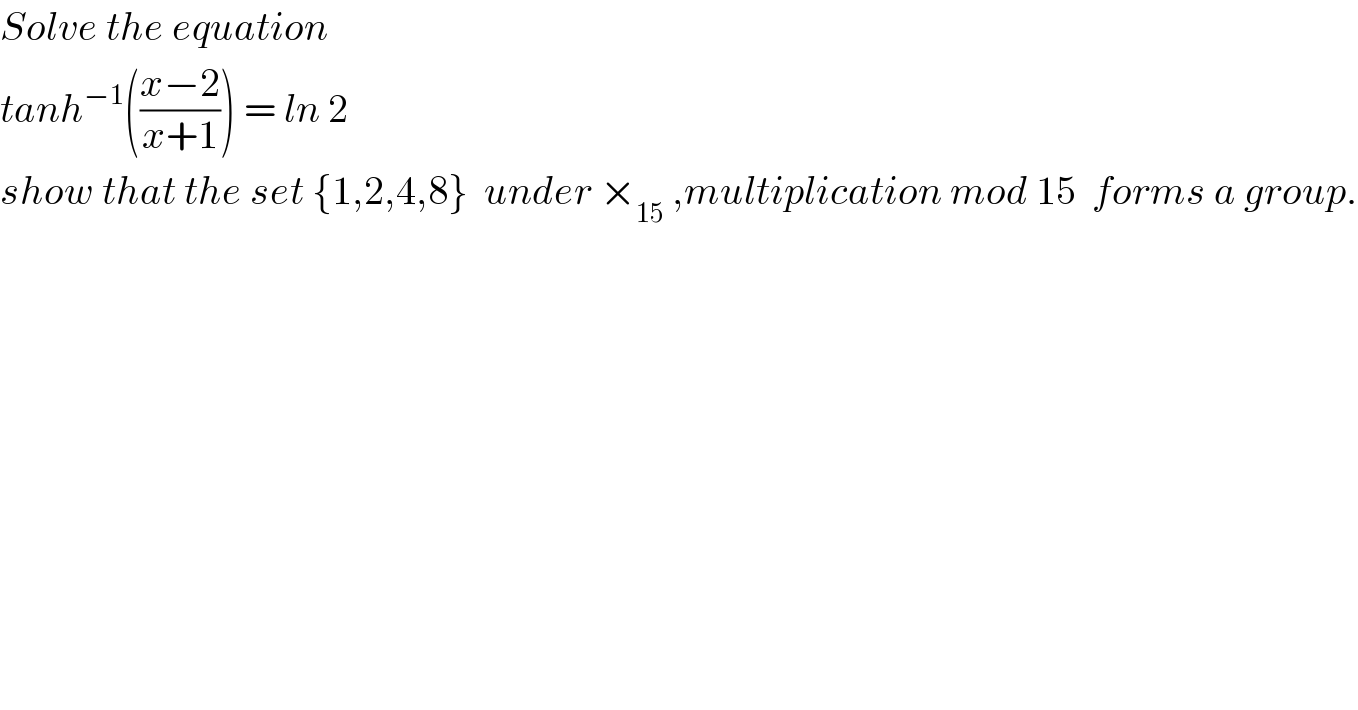
Question and Answers Forum
Question Number 68676 by Rio Michael last updated on 14/Sep/19

Commented by MJS last updated on 14/Sep/19

Commented by Rio Michael last updated on 15/Sep/19

| ||
Question and Answers Forum | ||
Question Number 68676 by Rio Michael last updated on 14/Sep/19 | ||
 | ||
Commented by MJS last updated on 14/Sep/19 | ||
 | ||
Commented by Rio Michael last updated on 15/Sep/19 | ||
 | ||